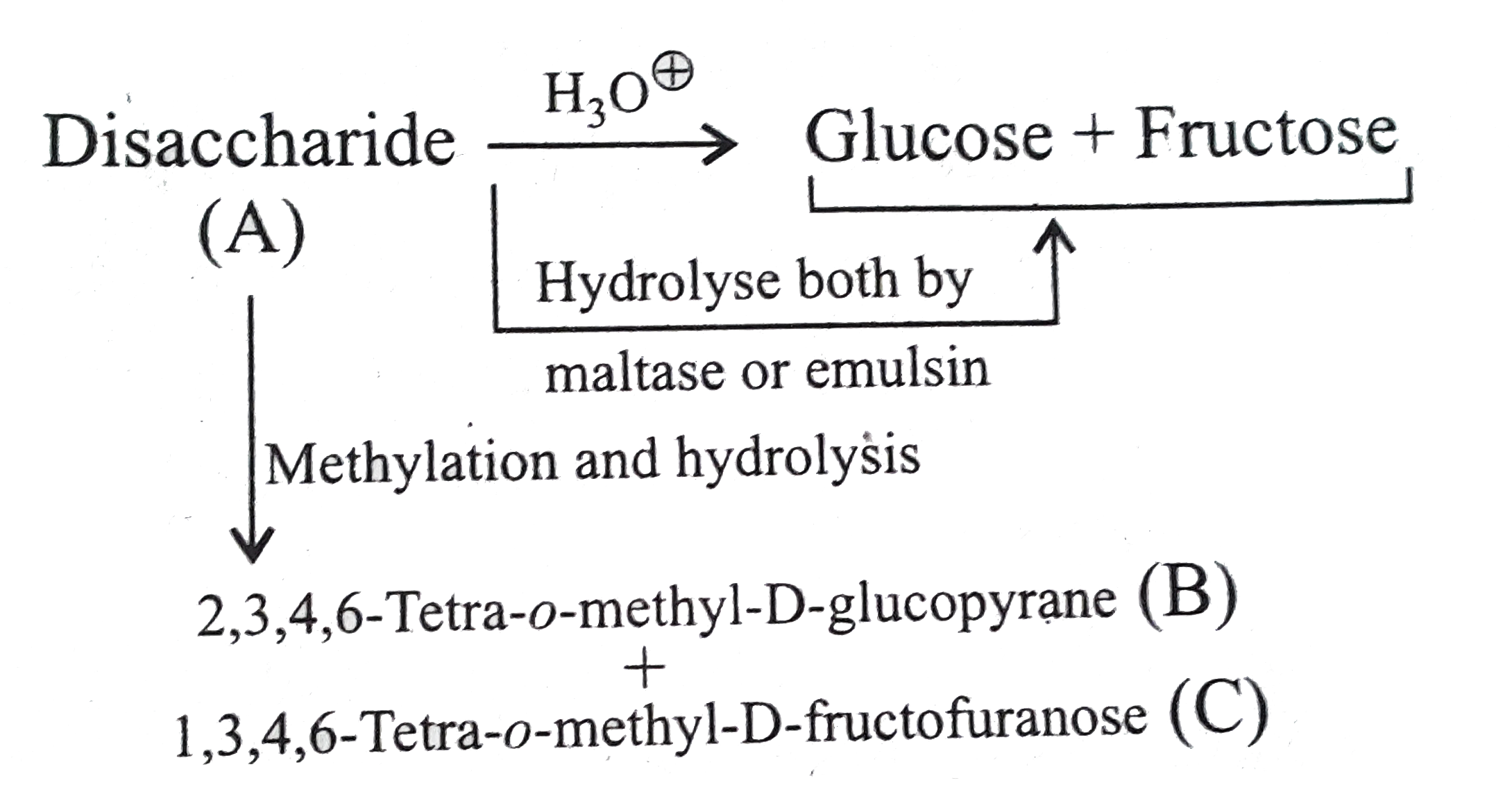Which does not mutarotation
Sucrose
Maltose
Glucose
Fructose
The correct Answer is:A
To determine which sugar does not show mutarotation, we need to understand what mutarotation is and the properties of the sugars listed in the options.
1. Define Mutarotation:
- Mutarotation is the change in the optical rotation of a sugar solution as it equilibrates between its anomeric forms. This typically occurs in sugars that can exist in cyclic forms and have a free anomeric carbon.
2. Identify the Sugars:
- The options given are sucrose, maltose, glucose, and fructose.
3. Analyze Each Sugar:
- Glucose: Glucose is a reducing sugar and can undergo mutarotation because it has a free anomeric carbon (the carbon that is part of the hemiacetal).
- Fructose: Fructose is also a reducing sugar and can undergo mutarotation as it has a free anomeric carbon.
- Maltose: Maltose is a disaccharide made of two glucose units and has a free anomeric carbon, allowing it to undergo mutarotation.
- Sucrose: Sucrose is a disaccharide composed of glucose and fructose. However, it is a non-reducing sugar because the anomeric carbons of both glucose and fructose are involved in the glycosidic bond, leaving no free anomeric carbon available.
4. Conclusion:
- Since sucrose does not have a free anomeric carbon and cannot undergo mutarotation, the answer is sucrose.
Final Answer:
Sucrose does not show mutarotation.
- Mutarotation is the change in the optical rotation of a sugar solution as it equilibrates between its anomeric forms. This typically occurs in sugars that can exist in cyclic forms and have a free anomeric carbon.
- The options given are sucrose, maltose, glucose, and fructose.
- Glucose: Glucose is a reducing sugar and can undergo mutarotation because it has a free anomeric carbon (the carbon that is part of the hemiacetal).
- Fructose: Fructose is also a reducing sugar and can undergo mutarotation as it has a free anomeric carbon.
- Maltose: Maltose is a disaccharide made of two glucose units and has a free anomeric carbon, allowing it to undergo mutarotation.
- Sucrose: Sucrose is a disaccharide composed of glucose and fructose. However, it is a non-reducing sugar because the anomeric carbons of both glucose and fructose are involved in the glycosidic bond, leaving no free anomeric carbon available.
- Since sucrose does not have a free anomeric carbon and cannot undergo mutarotation, the answer is sucrose.
Sucrose does not show mutarotation.
Topper's Solved these Questions
- BOOK - ERRORLESS CHAPTER - BIOMOLECULES AND POLYMEREXERCISE - Ordinary Thinking (Proteins , amino acids and Enzymes)121videos
BIOMOLECULES AND POLYMER
- BOOK - ERRORLESS CHAPTER - BIOMOLECULES AND POLYMEREXERCISE - Ordinary Thinking (Fats and Lipids)27videos
BIOMOLECULES AND POLYMER
- BOOK - ERRORLESS CHAPTER - ANALYTICAL CHEMISTRYEXERCISE - JEE Section (Only One Choice Answer)36videos
ANALYTICAL CHEMISTRY
- BOOK - ERRORLESS CHAPTER - CARBOXYLIC ACID AND THEIR DERIVATIVESEXERCISE - Jee Section (Matrix Match type Questions)2videos
CARBOXYLIC ACID AND THEIR DERIVATIVES
Similar Questions
Assertion (A) D-glucose when dissolved in water undergo mutarotation while sucrose solution does not show mutarotation
Reason (R) D-glucose exist in two cyclic anomeric forms.View SolutionExplain, in neutral or basic aqueous solution, glycosides do not show mutarotation, but in acidic medium they show mutarotation.
View Solution
Knowledge Check
- Question 1 - Select One
Which does not exist
A[SnCl6]2−B[GeCl6]2−C[SiCl6]2−D[CCl6]2− - Question 2 - Select One
Which does not exist
A[SnCl6]2−B[GeCl6]2−C[SiCl6]2−D[Cl6]2− - Question 3 - Select One
Which does not exists
A[CF6]2−B[SiF6]2C[GeF6]2D[SnF6]2
In neutral or basic solutions, glycosides do not show mutarotation. However, if the solutions are made acidic, glycosides show mutarotation. Explain.
View SolutionGive the structure and IUPAC name of disaccharide, which gives the reactio given below:

Given, (A) does not reduce Fehling's solution and does not mutarotate.View SolutionWhich does not contain carbohydrate?
View SolutionWhich does not exist ?
View SolutionWhich of the following compounds does not undergo mutarotation ?
View Solution

